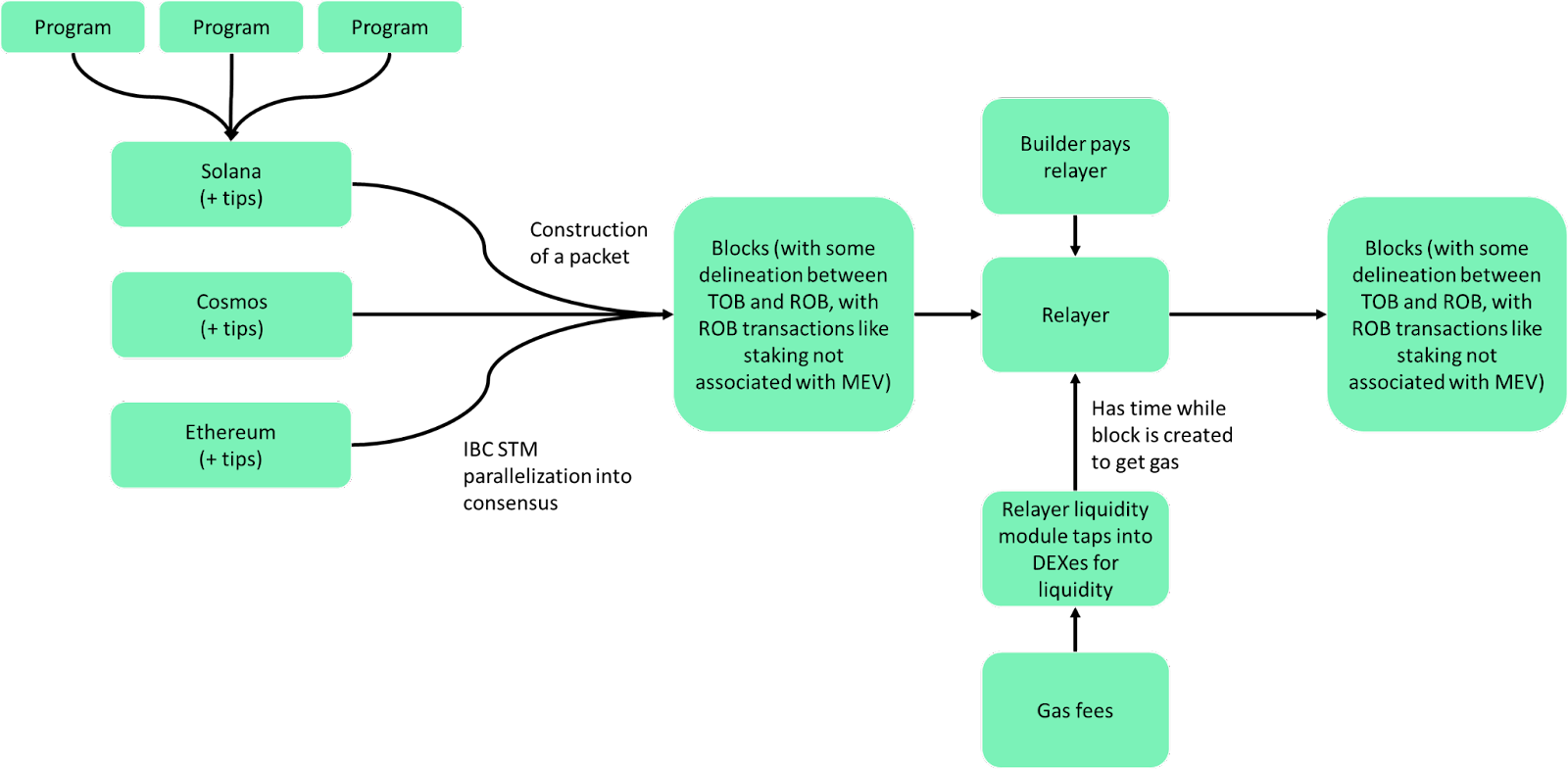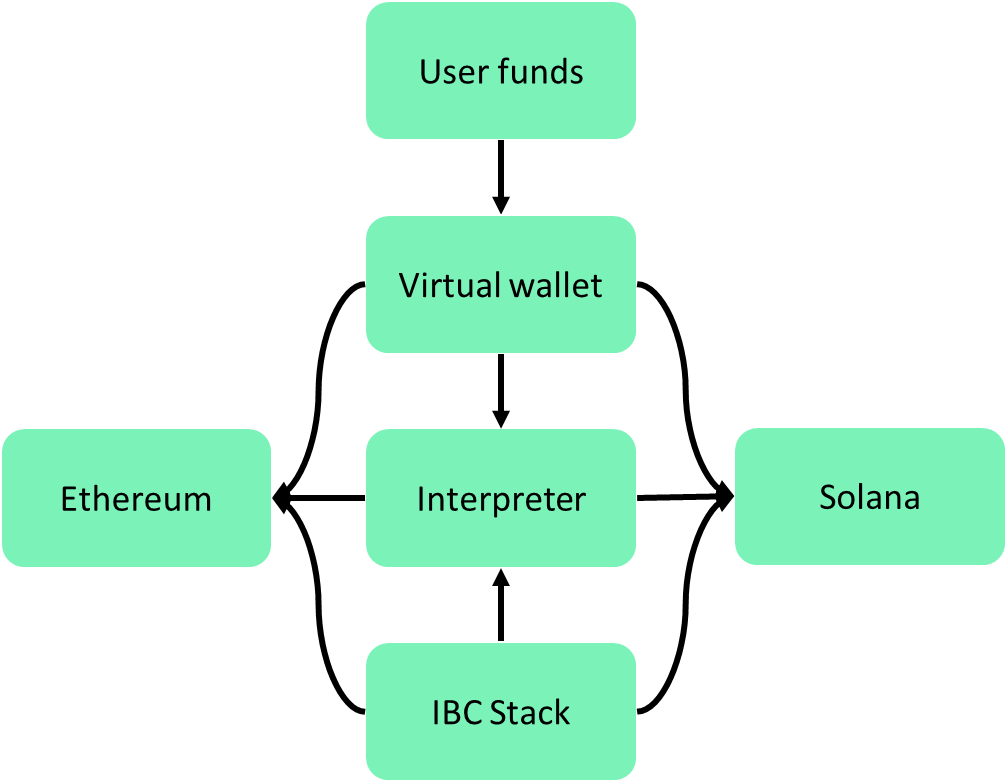Protocol Architecture/Features
The MANTIS framework is architected with the following components:
- Cross-Domain Communication via the IBC
- Multi-Domain Auctions
- Language for Execution
- Verifiable Settlement
Cross-Domain Communication via the IBC
MANTIS leverages Composable’s IBC bridge to facilitate cross-chain intent settlement. Our trust-minimized bridge in turn leverages the Inter-Blockchain Communication (IBC) Protocol. We have already connected Polkadot, Kusama, and Cosmos/the Interchain to this bridge, with expansion to Solana and Ethereum in the works.
Multi-Domain Auctions
User intents are scored based on volume cleared, with solutions being screened for MEV and bundled into a block for each domain. Searchers can tip for priority, and finalized blocks are embedded with validity predicates and sent to builders. This is depicted below:

Language for Execution: The Composable Virtual Machine
When the best solution is found, it is turned into a Composable Virtual Machine (CVM) program, which:
- Specifies which hops need to happen
- Specifies which calls to virtual wallet need to occur
- If a solution has multiple hops - routed back to Centauri chain
- Ex. Transferring to a CEX
- Problem defined as location to send funds to
- User funds transferred to virtual wallet
- CVM instruction set defines the necessary hops to the required network able to accept the assets
- Transfers occur over IBC
This is depicted below:

Verifiable Settlement
Settlement of transactions resolving user intents must be verifiable. We also believe that these transactions must be partial block aware; To improve cross-domain censorship-resistance and enforce searcher conditioning for cross-domain transactions, partial block auctions are a must.
Examples of this can be seen in Cosmos, but Ethereum requires additional work regarding commitments to allow for a differentiation between top-of-block and rest-of-block.